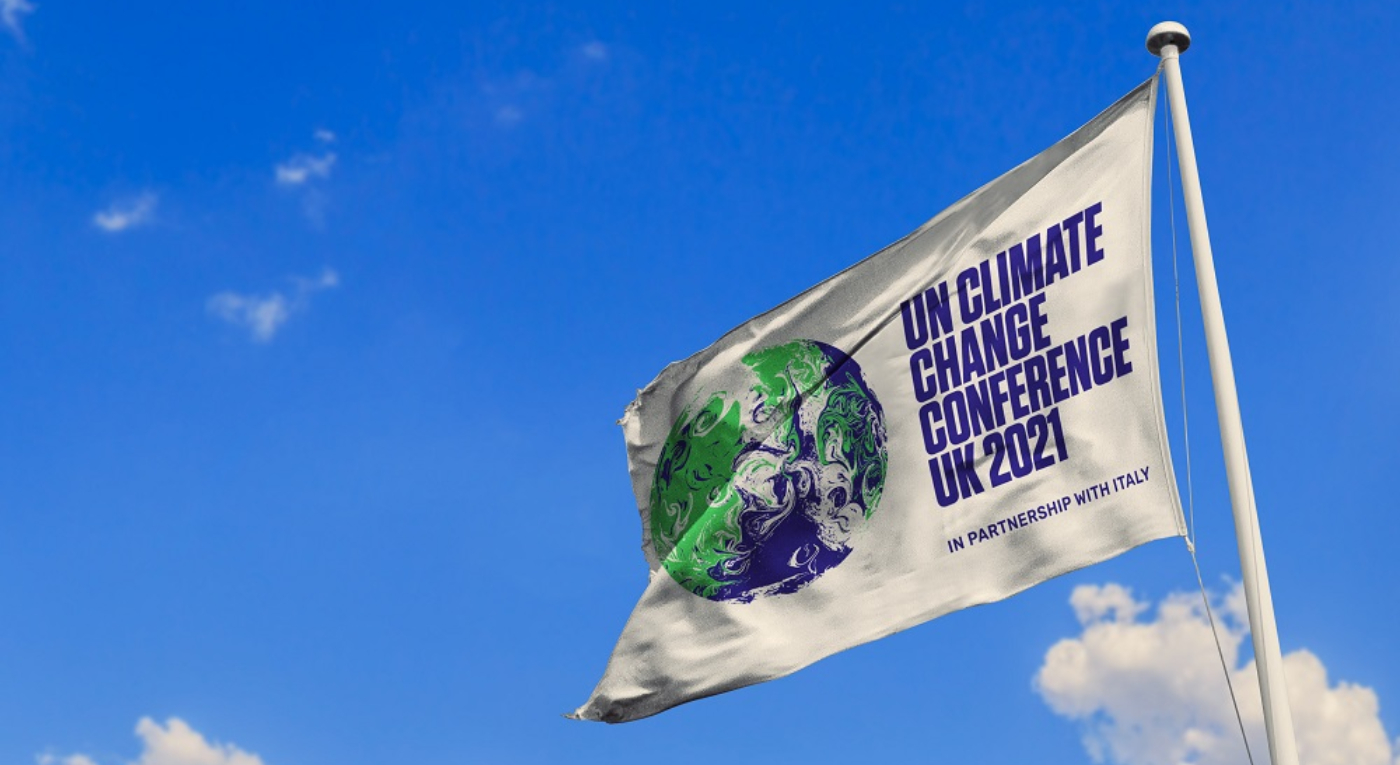

World leaders are currently gathered in Glasgow, Scotland for COP26, the United Nations Climate Change Conference.
It is no exaggeration to say that COP26 is the most important multilateral conference on the environment in a generation and may represent our last chance to collectively address climate change through mitigation and adaptation actions before the planet warms to catastrophic levels.
However, while the response to climate change must be coordinated, multilateral, and global in scope, it cannot be one-size-fits-all. The problems facing developing countries, particularly those in Africa, require a vision that goes beyond cutting emissions and dependence on fossil fuels. For Africa, mitigating the global effects of climate change means simultaneously developing a brand new paradigm for economic growth and industrialization that is built on sustainable technology and renewable energy, much of which either has yet to be invented or is prohibitively expensive. Much more so than reducing emissions (Africa contributes less than 5% globally), the immediate climate challenge for Africa is one of finance. In addition to servicing their crushing sovereign debt burden and addressing the devastating economic and social fallout from the COVID-19 pandemic, African countries must also find money for green technologies, planned adaptation measures, and making local communities more resilient to shocks. What world leaders say in regard to climate finance is a critical component of Africa’s future and one of the metrics for measuring the success of COP26.
What is COP26?
COP26 is the 26th Conference of the Parties to the United Nations Framework Convention on Climate Change (UNFCCC) which is the result of the Earth Summit held in Rio de Janeiro in 1992. The UNFCCC, which entered into force in 1994, requires the parties to the agreement to meet on an annual basis to assess their progress in dealing with climate change and meeting the UNFCCC’s goals. COP26 was originally scheduled to be held in 2020, but was postponed a year on account of COVID-19.
The ultimate objective of the UNFCCC is “stabilization of greenhouse gas concentrations in the atmosphere at a level that would prevent dangerous anthropogenic interference with the climate system.” It recognized that developed countries should “take the lead” in combating climate change and its adverse effects on their home ground as they are the source of most past and present greenhouse gas emissions. The UNFCCC generally established a goal for developed countries of stabilizing their level of greenhouse gas emissions at 1990 levels by the year 2000. How precisely countries would achieve this goal was not specified.
By the time of the very first COP in 1995 it was already understood that stabilizing developed country greenhouse gas emissions at 1990 levels would be insufficient to arrest climate change, particularly since the UNFCCC did not require binding commitments on the part of these countries. The result of this was a series of negotiations which produced the Kyoto Protocol in 1997 and the Doha Amendment to the Kyoto Protocol in 2012, committing parties to limit and reduce greenhouse gas emissions in accord with agreed individual targets. Although 194 countries have agreed to the Kyoto Protocol, the United States is not one of them. In fact, the US Senate unanimously adopted a resolution in 1997 stating that the US should not be a signatory to a climate agreement that did not also require emissions limits from developing countries. The failure of the US to agree to the Kyoto Protocol, as well as the exemption of China and India from its provisions, meant that international efforts to address climate change were effectively stymied for the first decade and a half of the 21st century.
At the end of COP17 in 2011 in Durban, the parties committed themselves to producing a legally binding instrument on global warming that would specifically include developing countries in its framework. That process resulted in the 2015 Paris Agreement at COP21 in France. Unlike prior accords, the Paris Agreement makes no distinction between developed and developing countries, or in the parlance of the UNFCCC, Annex I and Annex II countries. Instead, the Paris Agreement calls on all signatories to enhance the implementation of the UNFCCC by holding the increase in the global average temperature to well below 2ºC above pre-industrial levels, and to pursue efforts to limit that temperature increase to 1.5ºC above pre-industrial levels. Further, countries aim to reach global peaking of greenhouse gas emissions as soon as possible in order to achieve a climate neutral world by mid-century. Countries themselves are responsible for determining how they are going to achieve these goals and the method for doing so is by publication of nationally determined contributions (NDCs), which spell out their plans for action.
As a way of holding countries to account, the Paris Agreement includes a “ratchet mechanism” which requires them to return to the table every five years with fresh commitments and an updated plan for action. The first deadline for updated NDCs, or for initial NDCs in the case of signatories that had not yet provided one, was December 31, 2020. On account of the pandemic countries have delayed their responses, thus making COP26 the focal point for major countries to unveil their NDCs. Much of the buildup to COP26 has been speculation about what will be in the NDCs from China, the US, and other industrialized countries.
While the production and discussion of NDCs is important, and the speed at which countries can reduce their emission of greenhouse gasses is critical to mitigating the effects of climate change, emissions alone cannot be the only topic of discussion at COP26, particularly for Africa. Focusing on carbon neutrality, or net zero, while laudable, places a premium on future-oriented climate action when Africa is already on the front line of the crisis and in need of practical solutions today. The undisputable fact of climate change is that its costs are already being felt more sharply in poorer countries than in wealthier ones, a trend which will only continue to grow.
Climate Finance: Going Beyond the Reduction of Emissions
Africa is already the continent most exposed to the negative effects of climate change, despite having contributed the least to global warming in terms of greenhouse gas emissions. By itself, carbon neutrality will do absolutely nothing to mitigate the effects of warming that have already taken place. Moreover, the world is asking African states to continue to build their economies, reduce poverty and increase food security, all without the benefit of the very same fossil fuel technologies that every other industrialized country used to propel their own development. Africa is being asked not only to help fix a problem it did not create, but to do so using clean technologies that have yet to be invented or made cost-effective. The question of how to pay for all of this has to be just as high on the agenda at COP26 as that of reducing emissions.
Mobilizing finance for climate has not gone unnoticed by policymakers. The Paris Agreement calls for calls for “making finance flows consistent with a pathway towards low greenhouse gas emissions and climate-resilient development,” and specifically calls for an implementation that reflects “equity and the principle of common but differentiated responsibilities…in light of different national circumstances.” But, as with the NDCs themselves, how these responsibilities are actually met is left to the discretion of individual states. Here, more than any other area, there is a need for a concerted, multilateral approach by wealthier states to provide a framework to assist African countries to build adaptive capacity in regard to climate change. That is because, for Africa, the ability to finance climate is contingent upon its ability to service its sovereign debt. Climate finance and the sovereign debt crisis are the same issue and need to be addressed in the same breath.
Africa’s Debt Crisis: The (Other) Fire Burning Our House Down
While COVID-19 did not cause Africa’s debt crisis, the pandemic accelerated the magnitude of the continent’s existing public debt problem. Total external debt for sub-Saharan Africa was over $583 billion in 2018, which marks a 150% increase over the ten year period since 2008. Over that same period, average public debt increased by half from 40 to 59 percent of GDP, making sub-Saharan Africa the fastest growing area in terms of debt accumulation in comparison to other developing regions. Although there may be a tendency in some parts of the world, particularly in the United States, to think that the world has turned a corner on COVID-19 and that all can return to normal, the easing of the pandemic leaves African governments face-to-face with a vastly magnified debt crisis. Reducing emissions and developing adaptive capacity are Africa’s climate priorities. Countries on this continent need a comprehensive, multilateral solution to the debt crisis in order to free up capital and resources and rethink development to make it more sustainable and climate resilient.
In order to be effective in its frontline struggle against climate change, Africa needs the institutional assistance of all of its sovereign debtors (the Paris Club nations, China, and private bondholders) to resolve its debt crisis. For Africa, debt, development, and climate are interrelated. Budgets which were already on the precipice on account of sovereign debt obligations have been stretched even further to address the exigencies of the COVID-19 global pandemic. Many governments have been placed in the precarious position of having to decide between servicing debt and directing scarce resources toward saving lives. Without a comprehensive framework for restructuring or cancelling Africa’s sovereign debt, governments simply will not have the resources to make any effective contribution to climate change. Africa can pay its creditors or it can help invest in a sustainable, green future – it cannot do both. Should world leaders leave COP26 without a plan for addressing this nexus between sovereign debt and climate finance in Africa, they will have left a gaping hole at the center of any mitigation or adaptation plan.
Climate Change is Already Here: Funding for Adaptation
All of this is going to be expensive; there is absolutely no way of getting around that. Yet, the longer the wealthier countries equivocate on their emissions targets and technological investments, the cost of climate change will be measured in lives lost throughout Africa and the Global South. In his speech on November 1st at COP26, Indian Prime Minister Narendra Modi stressed a point that is of critical importance to Africa, as well as India – climate adaptation has received far less attention than has climate mitigation, and this is an injustice to vulnerable countries. Modi highlighted how this failure to focus on climate adaptation will have a significant effect on those countries that rely on their agricultural sector, as is the case throughout Africa. While much talk is being made of the commitment made 12 years ago by rich countries to provide $100 billion a year in funding for mitigation and adaptation by 2020, of the relatively modest funds which have been provided, the vast majority have gone to climate mitigation projects. This emphasis on mitigation suggests that developed countries are more interested in maintaining their own unsustainable carbon emissions than in helping people whose lives are threatened by those same reckless emissions right now. Despite a critical need for funds directed towards adaptation in less developed countries, UN Deputy Secretary-General Amina J Mohammed estimates that only a fifth of climate finance to date has been earmarked for adaptation. This is a ratio which can, and should, be reversed at COP26.
Conclusion
Without a doubt, COP26 has an ambitious agenda in front of it and a critical component of that agenda is the production of updated NDCs from the world’s industrialized nations. Their proposals and plans for reducing greenhouse gas emissions and reaching carbon neutrality will largely determine whether the Paris Agreement’s goal of limiting the temperature increase of the planet to 1.5ºC above pre-industrial levels is feasible and, by extension, whether climate change can be mitigated before there is a catastrophic increase in global temperature. However, reducing and mitigating carbon emissions is not the only front in the battle against climate change. For Africa in particular, the question of climate finance for adaptation is critical. It is also critically related to Africa’s other finance challenges, including the sovereign debt crisis. Bold thinking and multilateral solutions are called for. Africa’s future depends on the ability of world leaders at COP26 to address these important issues in the next five years and beyond.
Fernando C. Saldivar, S.J. is the Global Policy and Advocacy Officer at JENA.
Jesuits Justice and Ecology Network Africa (JENA) at #COP26.
Related Articles
Select Payment Method
Pay by bank transfer
If you wish to make a donation by direct bank transfer please contact Fr Paul Hamill SJ treasurer@jesuits.africa. Fr Paul will get in touch with you about the best method of transfer for you and share account details with you. Donations can be one-off gifts or of any frequency; for example, you might wish to become a regular monthly donor of small amounts; that sort of reliable income can allow for very welcome forward planning in the development of the Society’s works in Africa and Madagascar.
Often it is easier to send a donation to an office within your own country and Fr Paul can advise on how that might be done. In some countries this kind of giving can also be recognised for tax relief and the necessary receipts will be issued.

